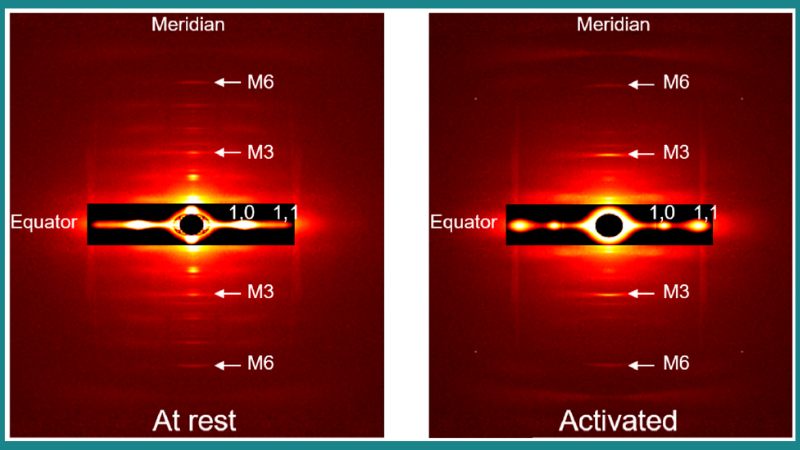When we think about cardiac health and physiology, we often default to explanations that are biochemically mechanistic and overlook the role that molecular physics can play in influencing physiology. Cardiac biophysics is a necessary component for understanding cardiac disease and dysfunction. This publication review explores recent publications that investigate mechanical and biophysical properties of cardiac muscle.
Featured image courtesy of Joumaa et al. (2021).
Myofibril Orientation as a Metric for Characterizing Heart Disease
In this article, Ma et al. (2022) investigated the change in myofibrillar orientation at increasing sarcomere lengths in myocardium taken from both diseased and wildtype cardiac tissue. Myocyte disarray, or the increasing state of disorientation of adjacent myocytes relative to each other, is a marker of cardiac disorders. The authors used our 402A force transducer and 610A Dynamic Muscle Control (DMC) software to mount and evaluate force of the myocyte samples. Their results indicate that diseased myocardium suffer from greater myocyte disarray; their methodology allows for the characterization of the myocardium under near-physiological conditions. This is an exciting new tool for the analysis of cardiac structure in diseased models using angle X-ray diffraction.
Effect of Active Lengthening and Shortening on Small-Angle X-ray Reflections in Skinned skeletal Muscle Fibres
In this article by Joumaa et al. (2021), the authors utilized small-angle X-ray diffraction to observe structural changes in sarcomeres. Joumaa and colleagues sought to determine the effect of active lengthening and shortening on the sarcomere structure but at steady-state isometric contraction versus purely isometric contractions at the same lengths. Our 400A force transducer and 322C high-speed length controller enabled them to mount their muscle tissue and control length as well as measure force. They concluded that increasing force does not require an increase in attached cross-bridges while decreasing force leads to a proportional reduction in attached cross-bridges. They also found that lengthening and shortening of sarcomeres leads to cross-bridge dispersion and/or conformation.
Reduced Preload Increases Mechanical Control (Strain-Rate Dependence) of Relaxation by Modifying Myosin Kinetics
Lastly, Schick et al. (2021) explored the Mechanical Control of Relaxation (MCR) which is critical for maintaining cardiac output. Relaxation of cardiac muscle is well known to be biochemically modified, but Schick and colleagues investigated the biophysical and biomechanical control of relaxation. They measured force and length of myocardial segments using our 801C small intact muscle apparatus to mount the samples isolated from rats. The authors determined that MCR is dependent on the muscle length prior to contraction. Thanks to computational modeling, they predicted the responsible mechanisms of MCR, and identified the potential use of these data in biophysical and clinical applications.




